Public Holidays in Austria: Full List with Cultural Insights
Nowadays, about 60 percent of the Austrian population is Catholic. While that doesn’t seem much, this was different not long ago. At the end of the second world war, more than 90 percent of Austrians was a member of the Catholic Church. That’s how it has always been, and therefore most of the Austrian holidays originate in the Catholic Christian tradition, as you can see in the table below.
List of Public Holidays in Austria
| Time of the Year | Holiday | Type of Holiday |
|---|---|---|
| 1st of January | New Years Day | Tradition |
| 6th of January | Epiphany | Religious |
| changes every year | Easter Monday | Religious |
| 1st of May | State Holiday | National |
| 40 days after Easter | Ascension Day | Religious |
| 50 days after Easter | Whit Monday | Religious |
| 60 days after Easter | Corpus Christi | Religious |
| 15th of August | Assumption of Mary | Religious |
| 26th of October | National Day | National |
| 1st of November | All Saints Day | Religious |
| 8th of December | Immaculate Conception | Religious |
| 25th of December | Christmas Day | Religious |
| 26th of December | Saint Stephens Day | Religious |
What are the public holidays in Austria?
Here are all the public holidays, how we celebrate them, and what you should do if you visit Austria during one of these special occasions.
The holidays listed here are the days we are off. There are days like the 24th of December which would traditionally be more important but are not a public holiday in Austria. I will mention these non-statutory holidays if they belong to a public holiday.
New Years Day (1st of January)
The new year is celebrated in most parts of the world. Austria is no different. There are various traditions around luck and health. People buy lucky charms and give them to their loved ones.
Among these lucky charms are marzipan pigs, horseshoes, chimney sweeps, and ladybugs.
A popular New Year’s tradition was pouring lead. Lucky charms were available as lead figures. These lead figures were melted with candles and poured into cold water. They froze and gave a new shape that you could then interpret.
Why do I write about pouring lead in the past tense? Because the EU banned it in 2019. Here I made a video about the last lead pouring we did in 2019.
At midnight you can hear the Viennese waltz all over Austria, and, like in the rest of the world, fireworks are fired.
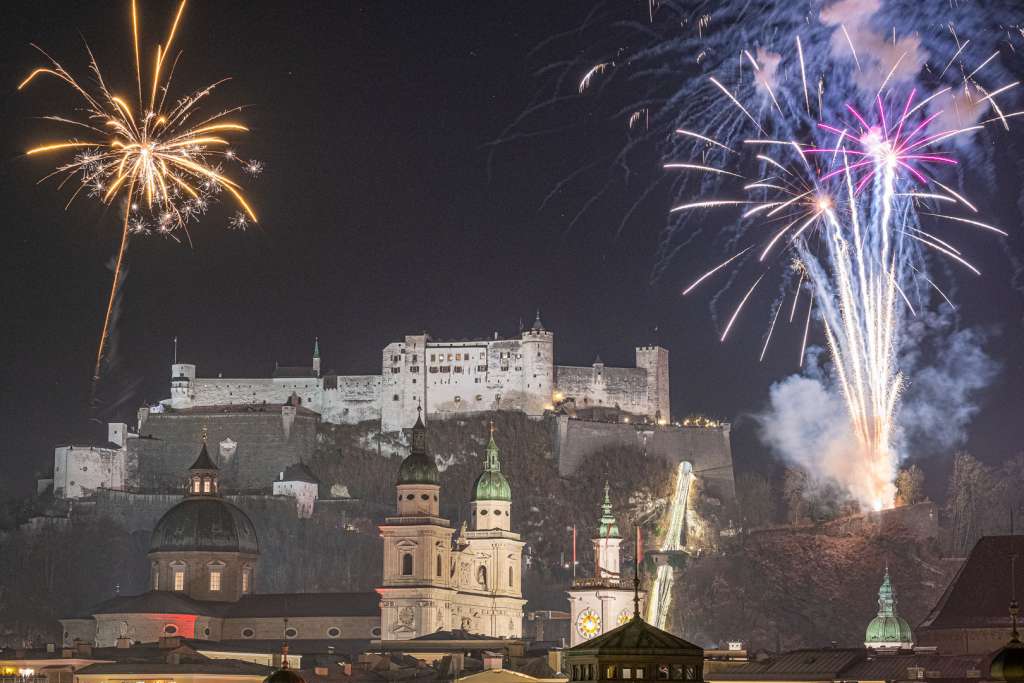
If you spend New Years Eve in Salzburg, find out what is going on at Residence Square or climb one of the city mountains to admire the fireworks from the fortress!
In 2019/2020 I made a YouTube video about what to do in Salzburg on New Year’s Eve but I don’t know if that’s gonna change in the coming years.
Epiphany – Three Wise Men (6th of January)
The three kings (Heilige Drei Könige) or three wise men remind us on the 6th of January of the Epiphany, the incarnation of God in the form of Jesus. Christmas two weeks earlier was the birth of Jesus. The three kings tell the story of Caspar, Melchior, and Balthazar, who followed a star that led them to the newborn Jesus in the crib. They brought him gold, incense, and myrrh as a present.
The most crucial tradition on Epiphany, the day of the three wise men, is “Sternsingen” (star singing). The “Sternsinger” are three children, dressed as the three kings and accompanied by an adult. They move from house to house, tell a poem, or sing a song and collect donations. Before moving on, they write the letter C, M, and B on the door frame together with the year on the door frame. For that, they use chalk. If you saw an inscription like 20 C+M+B 20, for example, it would come from 2020, and now you know what it means.
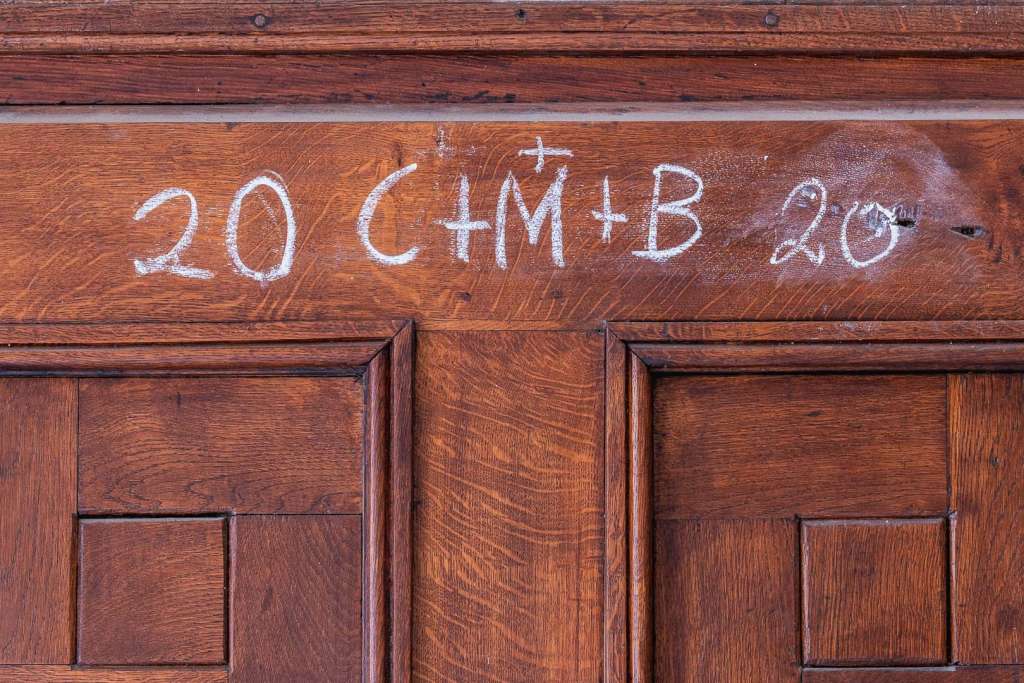
In history, star singing used to be a way of earning some extra cash. A form of begging, actually. Today the donations are collected for a good cause.
This holiday has no effect on adults. Some go to church, but for most, it’s just about getting a day off. And when the doorbell rings, you can expect three kids to sing for, and you can donate for a good cause.
Easter Monday (varies)
Despite Christmas being the most popular holiday in Austria, Eastern is actually the more important church holiday. On eastern, we commemorate the resurrection of Jesus on which the entire teaching of the church is based.
Easter is not only the most essential Catholic Festival. It is also the most interesting and complicated to understand. Easter Monday is the only public holiday of the six previous Easter days, but even most of the following holidays have to do with Easter. Let me summarize it for you.
Palm Sunday is the first of the Easter holidays. It is exactly one week before Easter Sunday. On Palm Sunday, Jesus came to Jerusalem. That’s when Holy Week begins. On Thursdays, we commemorate the last sacrament, on Friday the crucifixion, and on Sunday the resurrection.
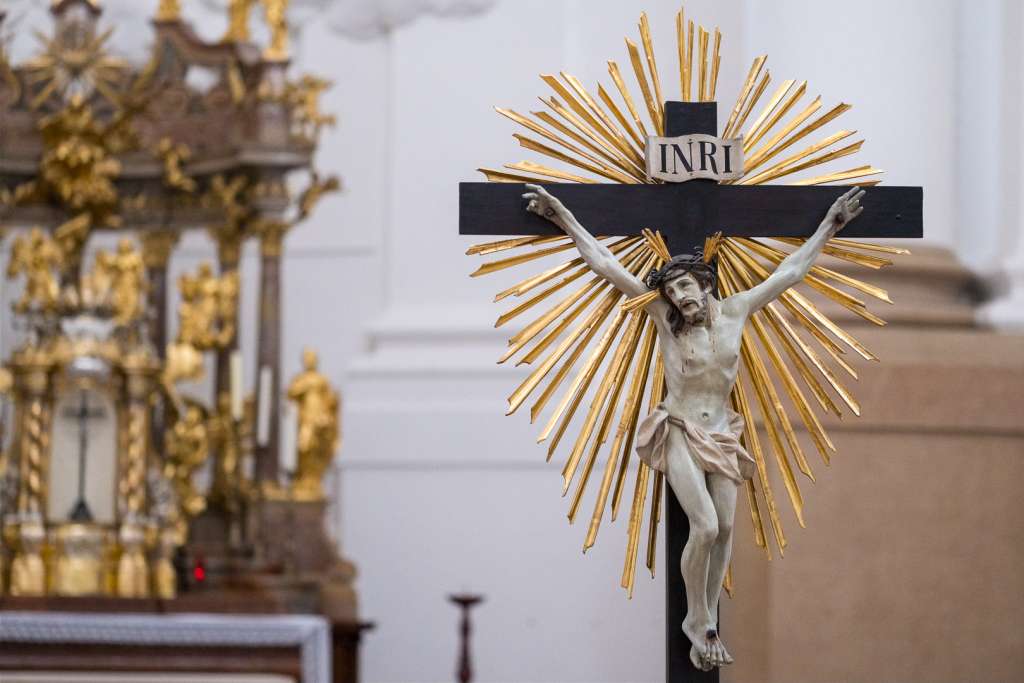
On Monday, two of the apostles met Jesus in Emmaus and returned to Jerusalem to report on the resurrection. That Monday is Easter Monday and the only public holiday of all these days.
Easter Sunday would be more important than Easter Monday. It’s the most important holiday, but we don’t work on Sundays anyway. That’s why Easter Sunday is no public holiday.
By the way, Easter does not have a fixed date because it does not follow the Gregorian calendar but rather a lunar calendar. Easter Sunday is the first Sunday after the spring full moon.
Easter traditions and customs are countless. From egg fights, painting eggs, and looking for Easter baskets to baking an Easter lamb and consecrating the palm bushes. Too many traditions for this article, so here you find everything you need to know about Eastern in Austria. Make sure to check out this article if you are spending Eastern in Austria.
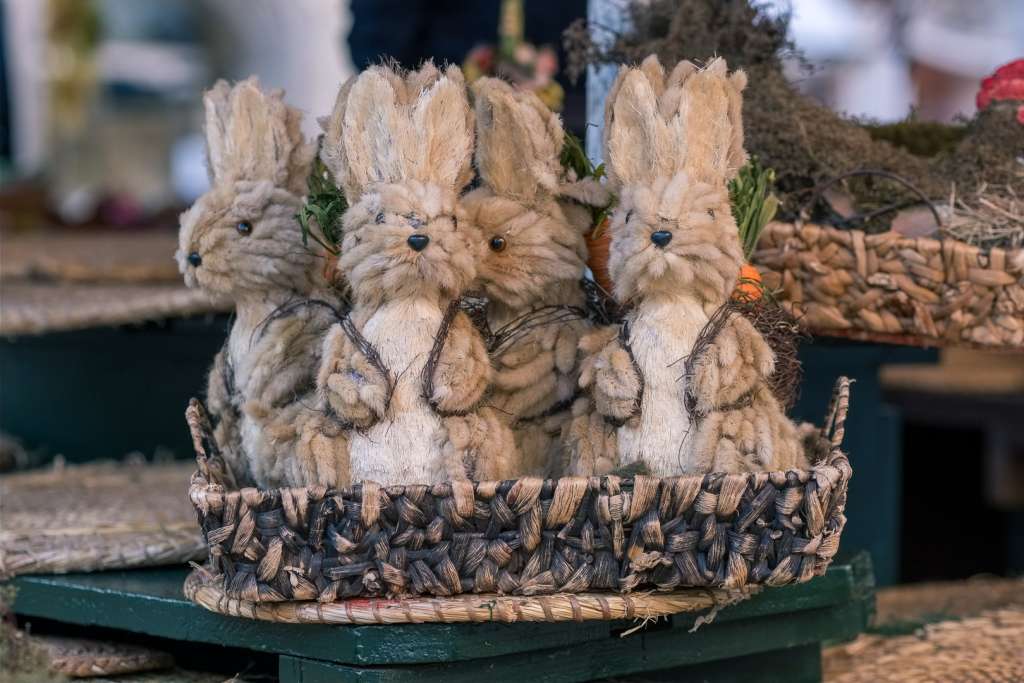
Just one more word. Many of these traditions are particularly important for children, and Eastern is celebrated differently depending on the family. For example, my mum would still prepare an Easter basket for me, even if I am 34 years old, but of course, she wouldn’t hide it like it would be done for children. I might visit my parents, but we wouldn’t do anything special for Eastern.
That’s different on Christmas. Everyone in Austria celebrates Christmas with family.
State Holiday – Labor Day (1st of May)
As in the rest of the world, the first of May is Labor Day. However, I would argue that Austrians do not celebrate May Day in memory of the labor movement.
We in Austria call Labor Day “Staatsfeiertag”, the state holiday. That’s because it was only enforced as a public holiday after the monarchy was abolished, and the first republic was founded in 1919.
Long before the 1st of May became Labor Day, there existed a tradition of setting up maypoles in Austria. A tree as a symbol for fertility. It is not known where this custom comes from, but it was probably an ancient pagan ritual. A spring festival. And that’s where it gets interesting.
The tree is peeled and polished. Wreaths and ribbons are hung on the top. These are, in turn, decorated with sausages. On May 1st, the maypole will now be brought to the village square. There it is traditionally set up with long poles and only with muscle strenght. That alone is impressive, but what follows is “Maybaumkraxln” where young guys climb the maypole to get the sausages down. I have no photos of it. Google it! It will blow your mind.
But all of this only happens if the maypole is not stolen. Why would it get stolen, you ask? That’s another tradition. “Maibaumstehlen”. On the night before May one village can try to steal the maypole of the other village. This is rarely possible because the maypole is, of course, guarded, and the rule stipulates that the tree may only be stolen if the guardian does not detect it.
Maypole celebrations are public, and if you are around on the 1st of May, you have to join one. It’s not only a chance to witness authentic Austrian traditions but also one of many opportunities to get drunk in public. The most popular Maypole celebrations in Salzburg are at the Stiegl brewery in Maxglan and the Maypole celebration in Aigen.
Ascension Day (40 Days after Easter)
From the beer festival in May back to the religious festivals. Ascencion day is the first of the holidays associated with Easter. 40 days after the resurrection on Easter Sunday, Jesus ascended to heaven.
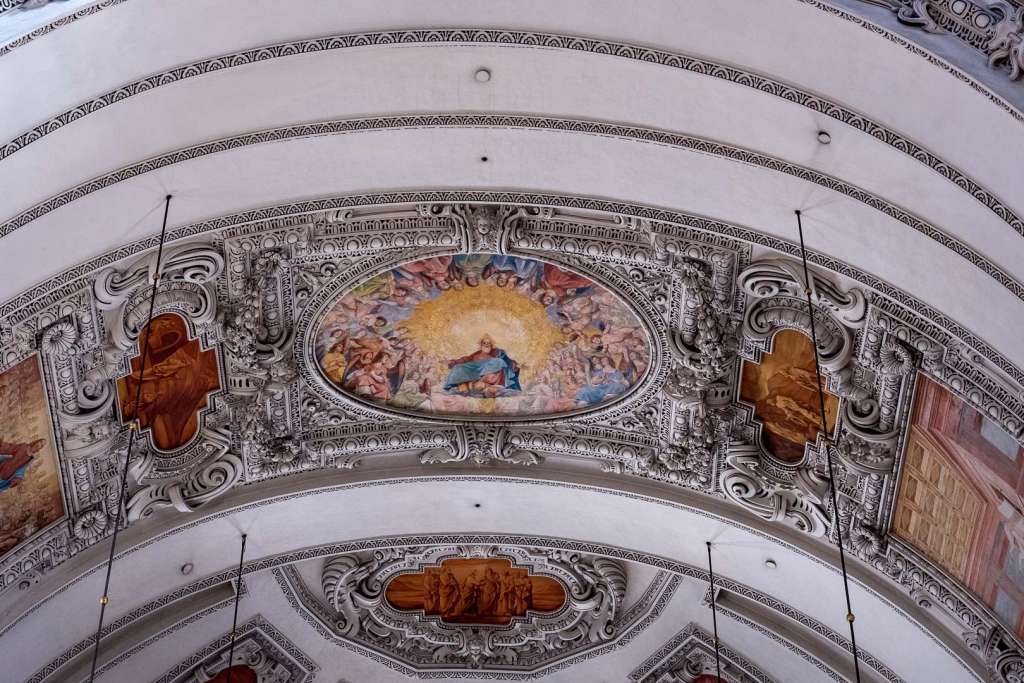
For the majority of Austrians, Ascension day is only important as a day off. There are church services, and more people than usual go to church, but not much more, and apart from that, nothing particularly happens.
If you spend ascension day in Salzburg, I would recommend visiting the mass at the Salzburg Cathedral. The Catholic Church is very present in Salzburg, even if the majority of the people are not more religious than anywhere else. A church service on a holiday is well worth seeing.
Whit Monday – Pentacost (50 Days after Easter)
Pentecost is celebrated ten days after the ascension of Jesus, 50 days after Eastern. The day after Pentecost Sunday is called Whit Monday. According to the Bible, the disciples of Jesus were disoriented after the crucifixion. Pentecost is said to be the day on which the Holy Spirit came over them on the 50th day after Eastern and released them from their disorientation.
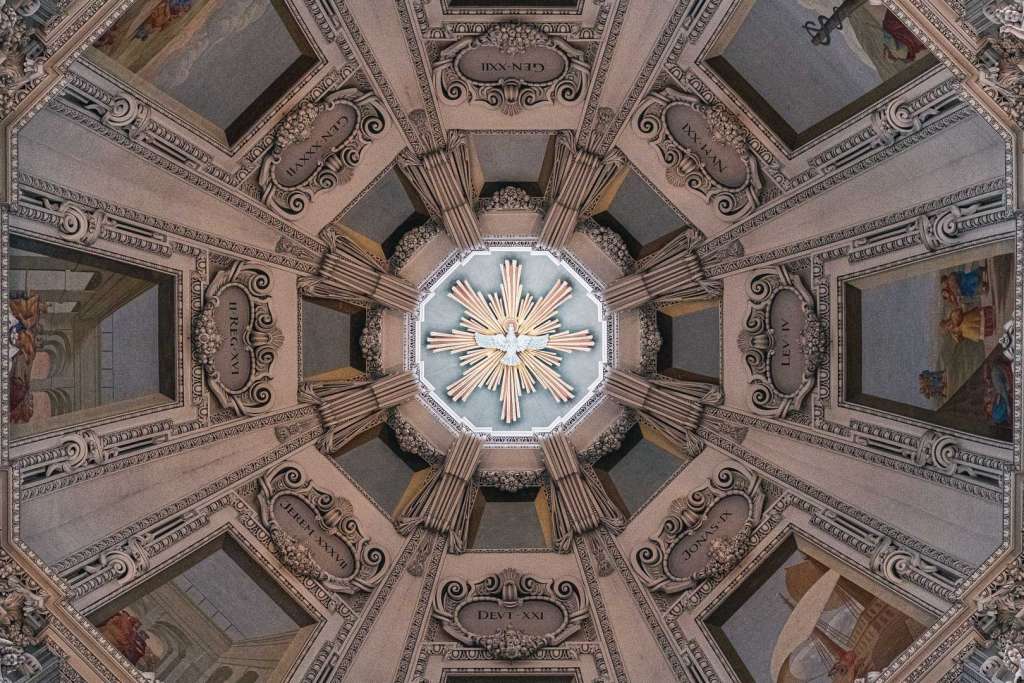
Again, Sunday is the more important day here, but not a public holiday because Sundays in Austria are off anyway and shops are closed.
Pentecost is not only celebrated as a religious holiday but also with various fertility rituals as the awakening of nature. Pentecostal customs differ from region to region, and none are so pronounced that it would be worth looking into it.
What I would recommend if you were in Salzburg at Pentecost is the same as on Ascension Day. I would recommend attending mass in the cathedral or in another church. Not for religious reasons but because it’s a chance to witness Austrian culture. Everyone is welcome at mass, but please be aware that there are no pictures and no walking around allowed during mass.
Corpus Christi (60 Days after Easter)
Corpus Christi is the last public holiday of the year that has to do with Easter. Forty days after Easter, the Ascension of Jesus is celebrated and fifty days after Easter Pentecost. Corpus Christi takes place on Thursday after the first Sunday after Pentecost. Confused? It takes place 60 days after Easter.
At Corpus Christi, the physical presence of Jesus is celebrated by the Eucharist. This holiday was first introduced by the Catholic Church in the 13th century and used as a demonstration of faith and a demonstration of power. Accordingly, Corpus Christi is celebrated with elaborate processions.
In the Corpus Christi processions, the so-called monstrance, which represents the body of Christ, is carried by a priest one. The monstrance and the priest are accompanied by men and women in dirndl and lederhosen, in traditional Austrian clothing. Often by a band, men with old rifles, and by believers and onlookers. On the way, the priest prays in all directions.
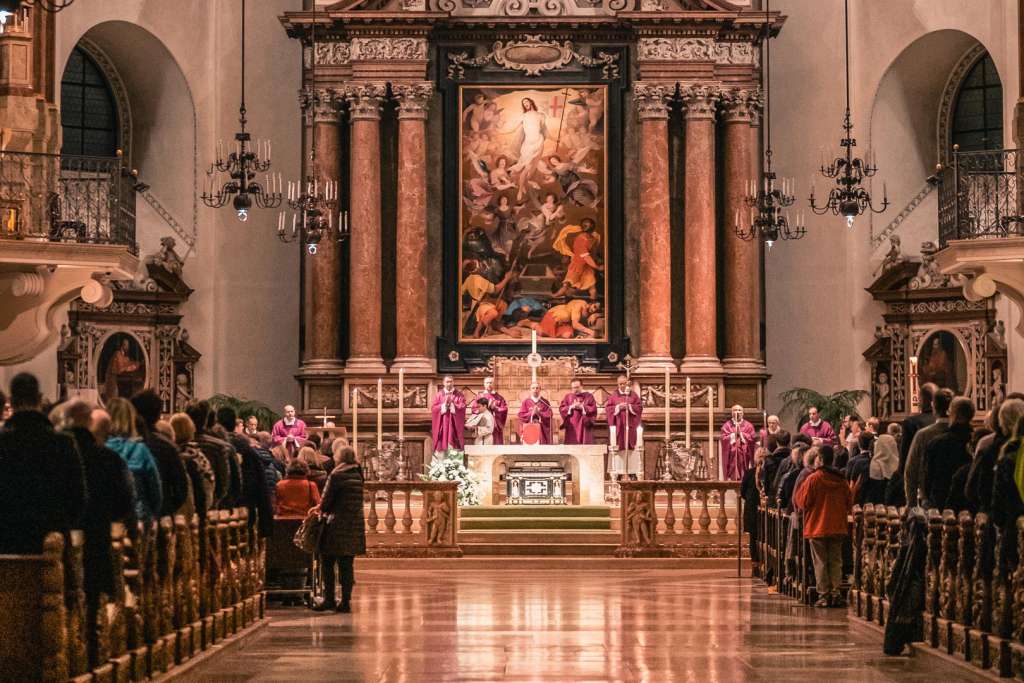
Even if attending Corpus Christi is not a must, I would recommend you to take part in the procession if you are in Salzburg or anywhere else in Austria at that time. It is an excellent opportunity to get to know traditional clothes, folk music, and customs. The processions begin at the church in Salzburg at the cathedral, where the mass takes place beforehand.
Assumption of Mary (15th of August)
The assumption of Mary goes back to the belief that Mary was brought to heaven by Jesus after her death. In contrast to the Ascension of Christ, the Ascension of Mary has a fixed day in the year. It is always celebrated on August 15th.
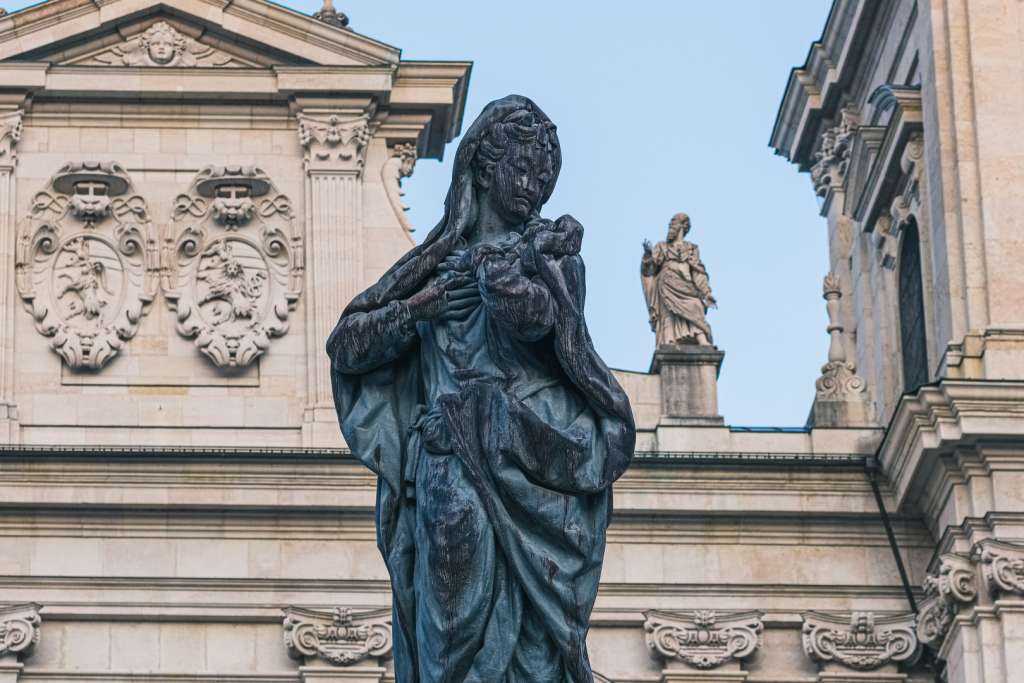
Maria Himmelfahrt, however, is really only celebrated by certain people. As with all other church holidays, there are masses to attend, but there are no customs. So for the average Austrian, it’s really just a day off.
National Day (26th of October)
After the liberation of Austria after the Second World War, during the occupation by the Allies, Austria had no state treaty for ten years and therefore no national holiday.
When Austria became sovereign again in 1955 and the 90 days for the withdrawal of the occupying powers had passed, Austria’s permanent neutrality came into force. The effective date was October 26, 1955, and therefore October 26 is our national holiday.
However, the only thing happening that day is that the Austrian flag is hoisted on public buildings. If you are in Vienna on National day, it could be interesting to visit the Hofburg, where the President’s official residence is made public, and a military spectacle is held on Heldenplatz.
All Saints Day (1st of November)
Since there are not enough days in a year to commemorate all Catholic saints, it was decided in the 9th century to introduce a day on which all saints are commemorated who do not have their own commemoration day.
However, All Saints Day is nowadays more about the remembrance of the dead than about all the Catholic Saints.
On All Saints Day, Families meet at the graves of their deceased relatives. In my case, I meet my aunts and uncles with my mother and brother at my grandparents’ grave in Kleßheim. There the pastor blesses the graves and traditional “Turmblasen” (tower music), trumpet music from the towers of the church is played.
Another tradition is the “Heiligenstriezl”. The godmother will give the godchild a Heiligenstriezl. In my case, that’s my aunt. After the meeting at the cemetery, we always head to her place for dinner. All Saints’ Day is a day when families come together.
All Saints’ Day may be less interesting for travelers, but a visit to one of the cemeteries in Salzburg’s old town could be worthwhile. Since I’m only at the cemetery in Kleßheim on All Saints’ Day, I don’t know what’s going on in the old town. I assume that families will also visit the graves of their deceased relatives there.
Besides, the Sebastian Cemetery and St. Peter’s Cemetery are cemeteries worth seeing anyway and a must when visiting Salzburg.
Immaculate Conception (8th of December)
There is a common misconception when it comes to Mary’s conception. Mary’s conception is not about the conception of Jesus but about the conception of Mary with her mother, Anna. It is not about the virginity of Mary when she received and gave birth to Jesus, but that Mary was born immaculate.
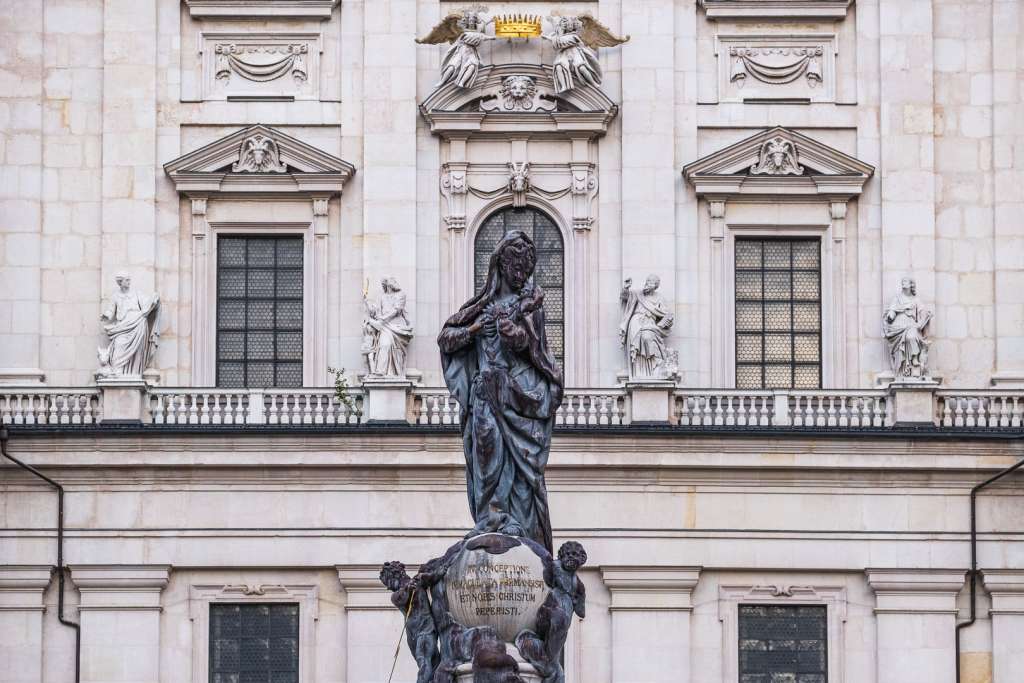
Maria’s conception is a public holiday, and we don’t have to work, but shops can be open from 10 am to 6 pm. If we have to work that day, we get a double salary.
Otherwise, Mary’s Conception is not a particularly exciting holiday. For most Austrians, it is just a day off.
Christmas Day (25th of December)
We all know that Christmas is about the birth of Jesus. The story is the same all over the world. Austria is, however, known for its traditions around Christmas and the Advent season. Christmas markets, mulled wine, cookies, and contemplation.
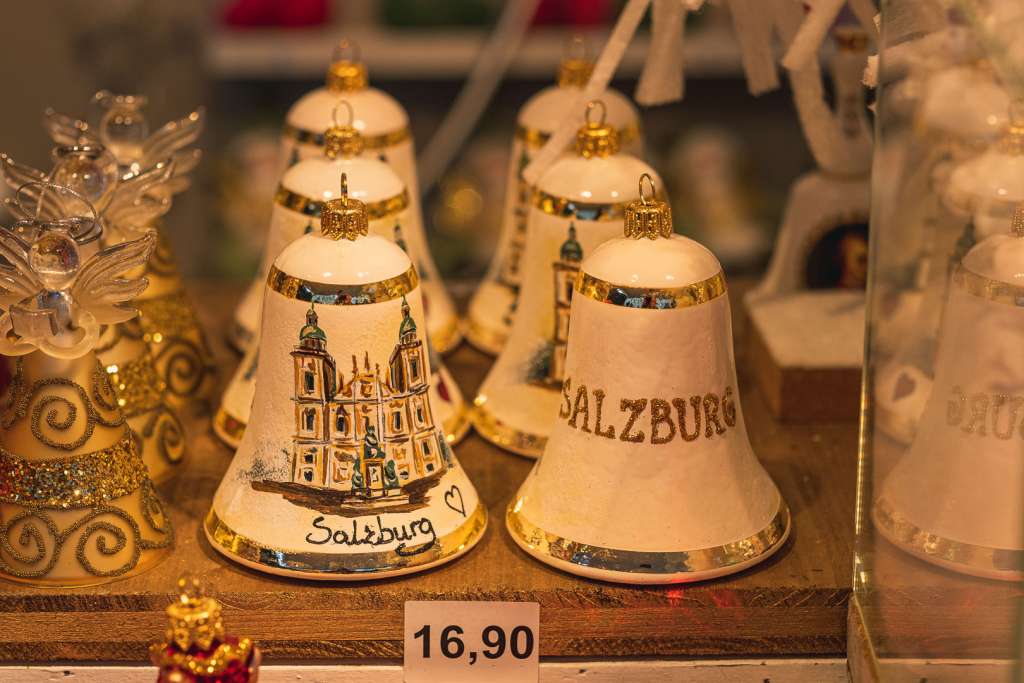
Advent starts at the beginning of December, and that’s when the Christmas markets open, so all December, you can feel a touch of Christmas in Austria.
Unlike in other countries, December 24th is the most important Christmas day in Austria.
The 24th is special for children, as the gift-giving takes place on the evening of December 24th. The Christmas tree is decorated during the day, but children are only allowed to see it in the evening. They are told that in the meantime, the Christ child is coming and bringing the presents. The Christ child is more like an angel. A child with wings.
I always went on a day trip with my father and brother at Christmas during the day while my mother was preparing everything. Of course, I thought that the Christkind prepared everything.
The highlight of Christmas is the church service, which is traditionally held at midnight. Even people who would otherwise never go to church and non-Catholics attend the “Mitternachtsmette”.
And although the 24th is the most important Christmas day, it is not a public holiday in Austria. Some have to work until midday on December 24th. The days off are the 25th and the 26th.
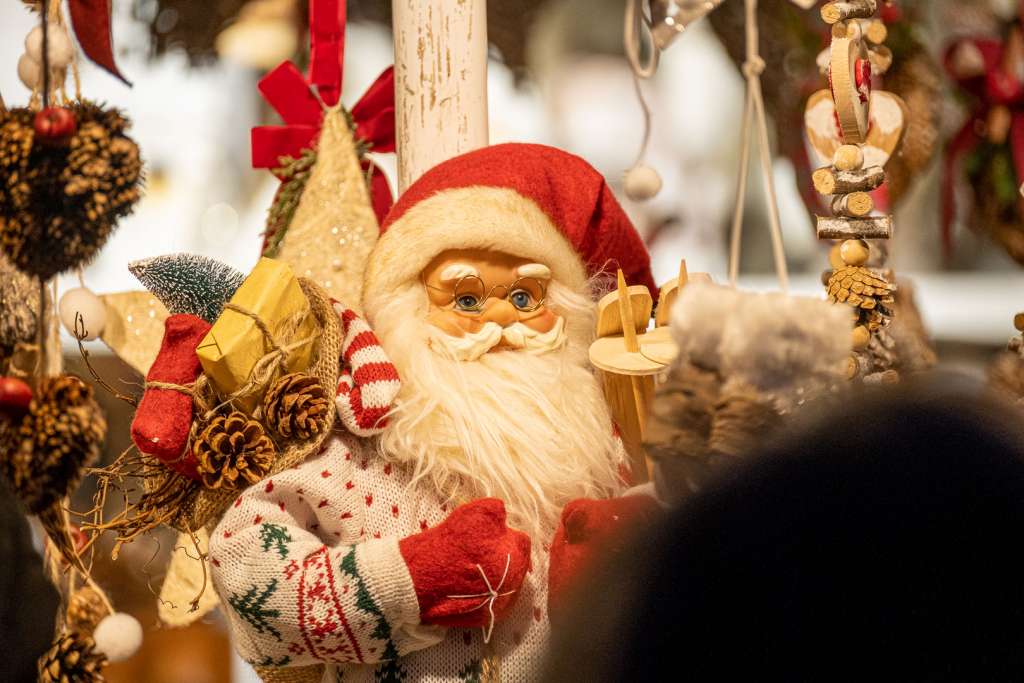
Christmas is a family festival and the only holiday that is celebrated in every family. Some more and some less, but if you are outside on the evening of December 24th, you will see how calm and peaceful it is.
And although the 24th is the most important Christmas day, it is not a public holiday in Austria. Some have to work until midday on December 24th. The days off are the 25th and the 26th.
At Christmas, there are too many traditions and customs for this article, so I recommend this article to find out more about Christmas in Austria.
Saint Stephens Day (26th of December)
On the second day of Christmas, the day of Saint Stephen, we commemorate the first Christian martyr. He was executed in Jerusalem about 40 years after the crucifixion of Christ.
The custom for many families on the 26th is to meet with the rest of the family. While December 25th is more of a day of rest in the narrowest circle, larger family reunions take place on the 26th.
Otherwise, Saint Stephens day is the second day of Christmas. Nobody really thinks about the Saint. Everyone only thinks of Christmas.
Rupertitag – Salzburgs Holiday (24th of September)
There are a few public holidays in Austria that are only celebrated in a certain state. Each of the nine states of Austria has its patron saint and their special day.
In Salzburg, that’s St. Rupert. He founded the Sankt Peter monastery and, thus, also the city of Salzburg.
The day of Saint Rupert is not an actual public holiday. We don’t get off from work, but schools are closed that day.
Around the 24th of September, the day of Saint Rupert, a five-day festival takes place. Rupertikirtag is best described as a beer and food festival with old amusement park attractions. Many people will be wearing Trachten (traditional Clothes).
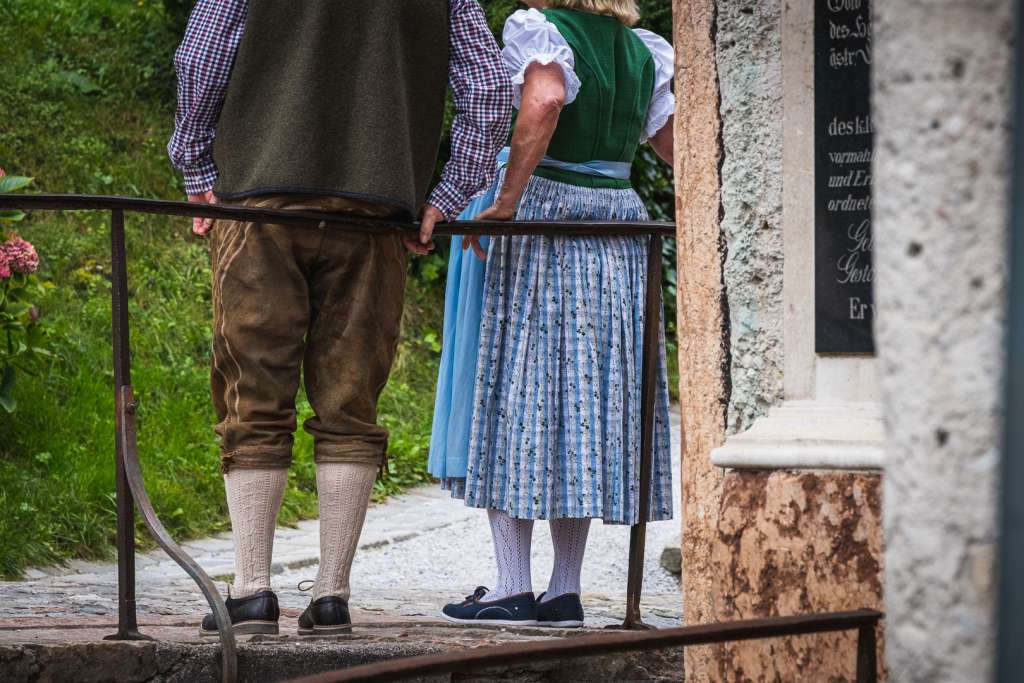
The Rupertikirtag is one of the oldest and most traditional festivals of this kind in Austria. The special thing about it is that it takes place in the middle of the city. This type of festival is usually found in the country.
If you happen to be in Salzburg on the days leading up the 24th of September, you will run into the festival anyway. It takes place on the squares around the cathedral. There is no escape from Rupertikirtag.
To get a first impression you can watch this video about our visit to Rupertikirtag in 2019 and you can read this article on everything you need to know about Rupertikirtag.
Is Sunday a Holiday in Austria?
Sunday in Austria is not a Holiday, but it is treated like one. Most shops are closed, and most people don’t have to work.
Sunday was initially introduced in ancient Rome by Emporer Constantin, who wanted people to go to church. Nowadays, Sunday is a rest day to ensure work-life balance, but the laws that keep us from working become looser over time.
When I was a kid all the shops except for petrol stations were closed on Sundays. Shops also closed at 6 pm during the week and at noon on Saturdays. Therefore you had to do all your grocery shopping right after work or Saturday morning.
These days it’s not like that anymore. Most shops are closed, but there is a supermarket at the train station that’s open and three supermarkets in the old town that open for a few hours.








